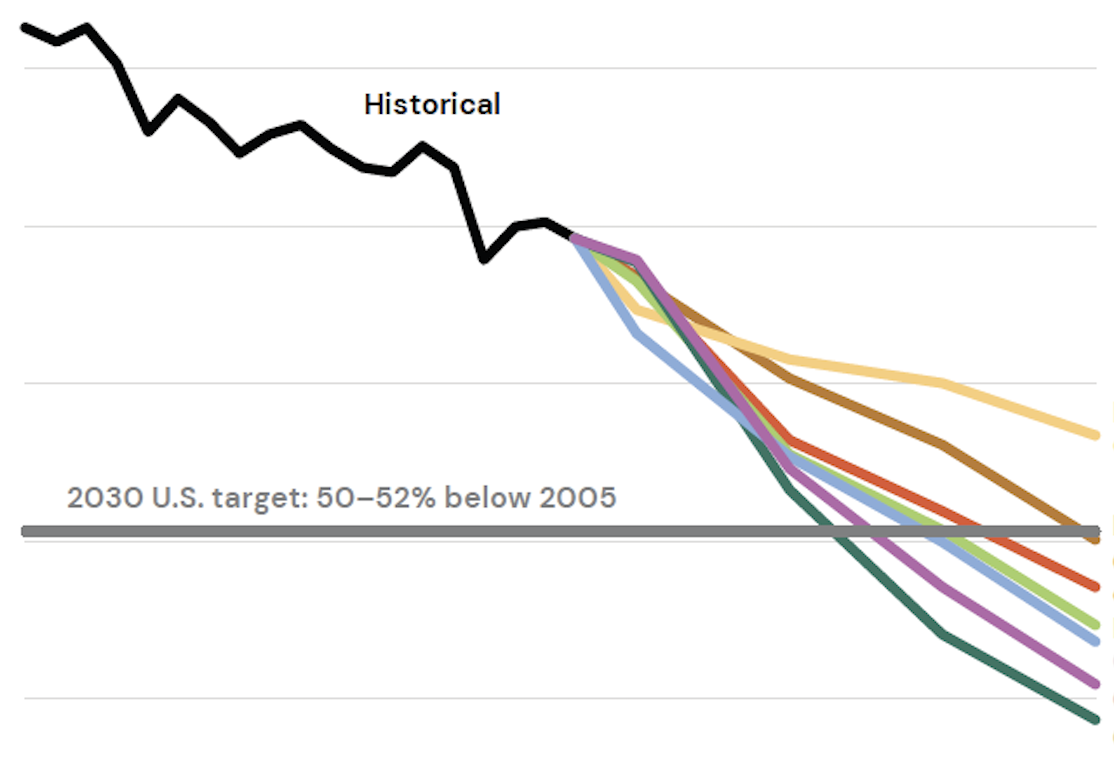
New modeling from the Hamilton Project and Brookings Institution explores the effectiveness of a variety of climate policies.
A carbon price is still critical to meet America’s climate commitments
By Dana Nuccitelli, CCL Research Coordinator
We at CCL have been advocating for Congress to put a price on carbon pollution for a long time. We’ve often made the case that research shows a carbon price alone or together with complementary policies would be sufficient to meet America’s climate commitments.
But, things have changed. A lot of years have passed since we first began our carbon price advocacy, and Congress passed a historic climate bill almost two years ago in the Inflation Reduction Act (IRA). Ever since then we’ve been waiting for somebody to model the climate policy landscape in a post-IRA world. And finally a group of climate economists teamed up with the Hamilton Project and Brookings Institution to do just that!
I recently gave a Citizens’ Climate University training to educate CCL volunteers about these important updates. Watch the full training here or read on for a recap:
The future is what you make it, so make it a good one
The Hamilton and Brookings report took a little trip back in time to 2021, when the Build Back Better framework was being built, including a variety of possible climate policies. Three types of policies were under consideration:
- A clean electricity standard that would require utilities to get a certain percentage of their electricity from clean sources over a specific timeline;
- A price on carbon pollution; and
- Subsidies in the form of tax credits and rebates.
During the bill negotiation process, the clean electricity standard concept was jettisoned by August 2021. A carbon price reportedly had 49 of the 50 votes in the Senate, but was never quite able to secure the final key vote. And so in the package that became the Inflation Reduction Act, the climate policies were largely limited to politically-palatable tax credits and rebates.
And so the Hamilton and Brookings report asked the question, which of these three approaches would work most effectively in a post-IRA world? Should we still implement the clean electricity standard proposed in early 2021, expand on the IRA’s subsidies, or establish a price on carbon pollution? The report also assessed what would happen if the IRA and/or EPA climate regulations were reversed in the coming years.
To meet Paris we need a carbon price
Of the seven scenarios modeled in the report, only one came close to meeting America’s Paris commitment of cutting our climate pollution 50% by 2030: keeping the IRA and EPA rules in place, and adding a modest carbon price. The authors found that this combination of solutions would achieve 47% cuts by 2030, and it’s fair to say that also implementing clean energy permitting reform and/or a more ambitious carbon price like that in the Energy Innovation Act would get us to our 50% commitment.
Expanding clean energy tax credits and subsidies was found to only reduce climate pollution a little bit, because the IRA is already investing a whole lot of money in those avenues. A clean electricity standard was projected not to have much more effect on American carbon pollution either, because the IRA is already doing a lot to decarbonize the power sector.
A carbon fee on the other hand would hit virtually every sector of the economy with a pollution pricing signal, and hence was found to be the most effective post-IRA climate policy.
The report also concluded that a carbon price would be the most cost-effective way to curb carbon emissions. That’s because putting a price on pollution provides a financial incentive for industries to reduce their emissions in the cheapest way possible. Providing subsidies to individual clean technologies and regulating electrical utilities are less economically-efficient approaches. And so a carbon price remains the best climate policy option on the table.
Email your members of Congress to make sure they’ve seen the new study and support this important climate policy!






